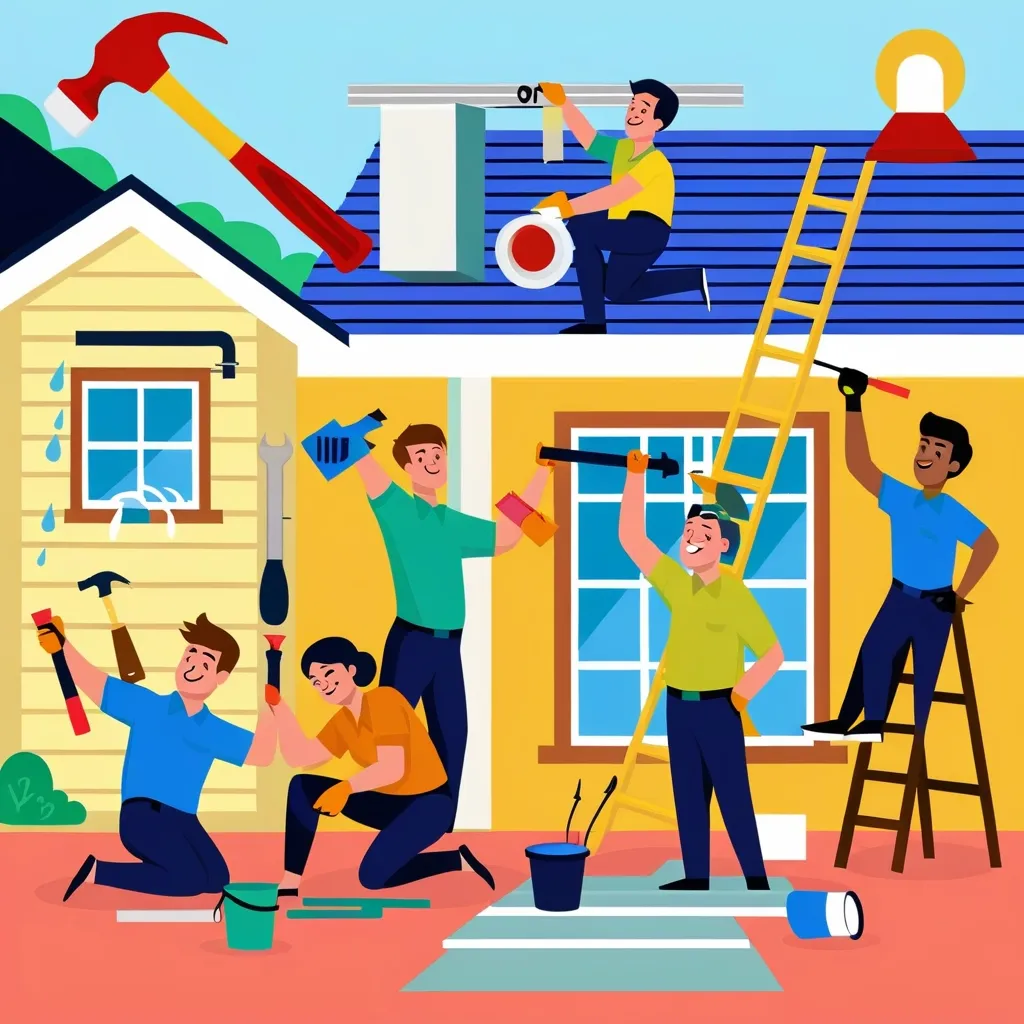In today’s bustling world, diving into DIY home repairs is more than just a quirky hobby; it’s become an essential survival skill for many homeowners. With the soaring costs of hiring professionals and a wealth of how-to information readily available online, more folks are choosing the DIY route to save cash and keep their homes in tip-top shape. Let’s jump into a comprehensive guide to kickstart your DIY journey and catch up on the latest trends shaking up the home improvement scene.
Why Bother with DIY Home Repairs?
The main reason so many people are getting their hands dirty with DIY projects is to save some hard-earned money. Studies reveal that most homeowners think DIY projects are a wallet-friendly way to upkeep and enhance their living spaces. But hey, while DIY can be light on your pocket, it’s not always the easiest road. Quite a few folks have shared their tales of DIY missteps that led to costly setbacks or endless delays.
Common DIY Home Repairs
There’s a bunch of basic home repairs you can handle on your own, no sweat. Think of simple fixes that can make a big difference:
Fixing Leaky Faucets and Pipes: No one likes listening to that drip, drip, drip. With just the right tools and a bit of basic plumbing knowledge, you could stop that leak without making a call to the plumber.
Cleaning Gutters: Regularly clearing out your gutters is crucial to prevent water damage and ensure proper drainage. All you really need is a sturdy ladder, some gloves, and a scoop.
Removing Water Stains from Ceilings: Spot a water stain on your ceiling? It’s probably a sign of a leak. A few cleaning supplies and some paint can make that unsightly mark vanish in no time.
Replacing Light Fixtures: Swapping out old light fixtures for something fresh is a straightforward job that can breathe new life into any room. Just remember to cut the power to the circuit before you start tinkering.
When to Call in the Pros
Sure, DIY projects can be super satisfying, but some jobs are definitely better left to the experts:
Foundation Repairs: The foundation is the heart of your home. Any problems here should be handled by a structural engineer or a pro contractor to make sure it’s done right.
Electrical Upgrades: Messing with electricity can be risky business if you’re not trained. Installing new wiring or repairing faulty systems is a job for a licensed electrician.
Gas Leaks: Got a hunch there might be a gas leak? Don’t even think about fixing it yourself. Call the gas company pronto; messing this up could lead to serious hazards.
HVAC Repairs: Heating, ventilation, and air conditioning systems can be pretty complex. Repairs or upgrades here should definitely be tackled by a certified HVAC specialist.
Trends in DIY Home Improvement
The DIY home improvement market is booming, thanks largely to younger generations who are all about doing it themselves. Some trends to keep an eye on include:
Millennials Leading the Charge: Yep, about 73% of millennials are into DIY, making them the MVPs in the home improvement world. They’re more likely to undertake projects and buy products to jazz up their homes.
Online Research: Most DIY enthusiasts dive deep into online research, scrolling through home improvement store websites, Google, Amazon, and direct manufacturer sites for product info, availability, pricing, and reviews.
Social Media Influence: Social platforms like YouTube, Facebook, and Instagram are goldmines for DIYers. They turn to these sites for tutorials, product demos, and ideas for new projects.
Budget-Conscious DIYers: With inflation on the radar, many folks are keeping a close eye on the budget. They’re finding clever ways to repurpose items they already own to spruce up their home decor.
Tools and Resources for the DIYer
Starting your DIY journey? Here’s a quick rundown of the essentials you’ll need:
Basic Toolkit: Gear up with a hammer, screwdrivers, pliers, a wrench, and a tape measure. This toolkit will have you covered for most basic repairs.
Online Tutorials: Platforms like YouTube and various home improvement store websites are treasure troves of how-to guides and tutorials. Learn new tricks and tackle bigger projects by watching the pros.
User-Generated Content: Check out reviews and videos from fellow DIYers for invaluable tips and insights. This user-generated wisdom can boost your confidence and help you make smart buying decisions.
Safety First
Safety should always be at the top of your list when tackling DIY projects. Here are a few safety pointers:
Power Down: When working with electrical systems, always make sure to cut off power to the circuit before kicking things off.
Suit Up: Protective gear like gloves, safety glasses, and a dust mask are your best friends when using power tools or handling hazardous materials.
Follow the Manual: Always stick to the instructions that came with your tools and materials. It helps you avoid common pitfalls and keeps you safe.
Educational Resources to Level Up Your Skills
New to DIY or feeling a bit shaky about your skills? Worry not! There’s a wealth of educational resources out there:
Many home improvement retailers run workshops and online tutorials to help you build new skills. For instance, Home Depot offers both virtual and in-person DIY workshops suitable for any skill level.
Personalized Tools and Tech Support
Modern DIYers crave personalized experiences and tech-savvy support. Many are using digital tools to plan their projects and even dabbling in augmented reality to visualize furniture in their spaces. Brands that invest in these tech areas are definitely ahead of the game.
Building Community and Support
The DIY community is a tight-knit and supportive group. Many homeowners find loads of inspiration and guidance from fellow DIYers on social media and user-generated content. This sharing spirit is particularly beneficial for younger folks who might need a confidence boost to complete projects solo.
Budgeting and Financing Big Projects
Got a larger project on your plate? Budgeting and financing become crucial. Home improvement loans can be a solid option if you need a financial boost for repairs and improvements. These loans often offer fixed rates and payments, making it easier to stick to your budget.
In Conclusion
Jumping into DIY home repairs can be super rewarding and a great way to save some bucks while maintaining your home. By staying updated with the latest DIY trends, knowing when to call in a professional, and having the right tools and resources, you’ll be well-equipped to tackle any project with confidence. Always put safety first, seek out educational resources if needed, and lean on the support of the DIY community to ensure your projects are a hit. With a bit of practice and patience, you’ll be on your way to becoming a DIY maestro in no time.






